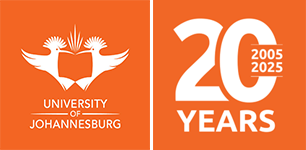UJ study shows that genetically engineered proteins could transform wastewater treatment
A group of local scientists from the University of Johannesburg (UJ) and the University of the Witwatersrand (Wits) are paving the way for advancements in wastewater management. They have cross-linked a genetically modified protein to biodegradable calcium alginate nanoparticles producing a novel protein-based nanobisorbent to absorb lead in high quantities from water in the bioremediation of heavy metal presenting an attractive alternative to current chemical processes.
According to Dr Kondiah Kulsum, UJ’s Deputy Head of Department (HoD): Biotechnology and Food Technology, “The current chemical strategies applied to treat wastewaters are inefficient at removing minute concentrations of lead. In addition the large-scale waste that is produced post chemical treatment is often dumped into landfills which re-contaminate the environment through soil pollution.”
“The researchers joined forces to find an alternative solution and focused their efforts on the use of bacteria genetically engineered (GE) with metallothionein (MTs) or metallo-chaperones,” said Dr Kulsum.
Currently lead exposure is responsible for 494 550 deaths annually in developing countries. Environmental contamination by lead waste particularly in low-income countries like South-East Asia and sub Saharan- Africa occurs due to mismanagement of mining and industrial effluent and the disposal of non-biodegradable electronic waste. A number of studies report that the levels of Lead in surface and ground water of several areas in South Africa for example exceed the acceptable safe limit of <0.01 mg/L in drinking water.
Using tryptophan fluorescence and lead binding assays, the team found that the purified GE fusion protein (rPbrD) was able to bind lead and maintain its native structure as Trp fluorescence is known to be quenched upon metal ion binding. This was also evident when the GE fusion protein was further cross-linked to calcium alginate nanoparticles to form the nanobiosorbent.
Dr Kulsum concludes: “We would like to incorporate the protein nanobiosorbent into a membrane such as the hollow fibre membrane which is commonly used in water treatment and perform a pilot scale water treatment. It is aimed at improving small-scale water treatment for local communities centered around sources of heavy metal contamination such as mines and industry.”
The research is interdisciplinary. This is the first report on the expression and purification of a functional fusion PbrD protein using an E. coli expression system. The ability of the expressed protein to bind lead in the presence of concentrations higher than those reported in ground/ surface water in South Africa suggest its potential to be developed into a biosorbent for the treatment of lead contaminated water. Future work would include optimizing the immobilization strategy to maintain the activity of the protein under varying environmental conditions such as pH and temperature.
The team is currently working on Nano-biotechnology focusing on heavy metals, water pathogens, biosorbents, diagnostics, protein expression and green synthesis of metal nanoparticles.

